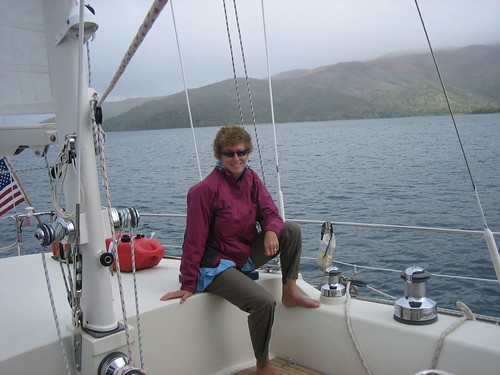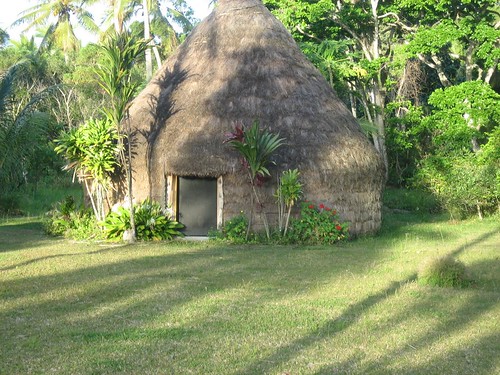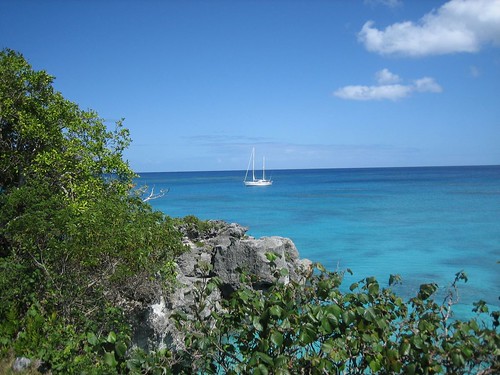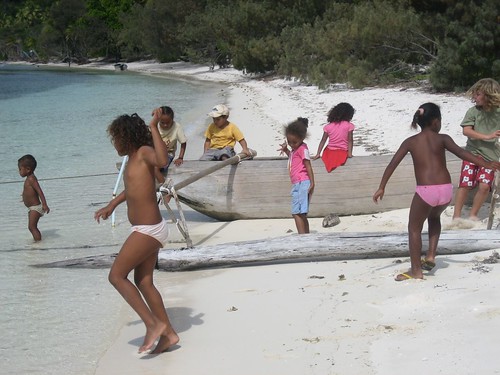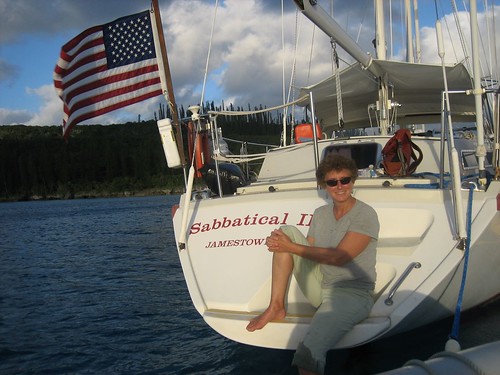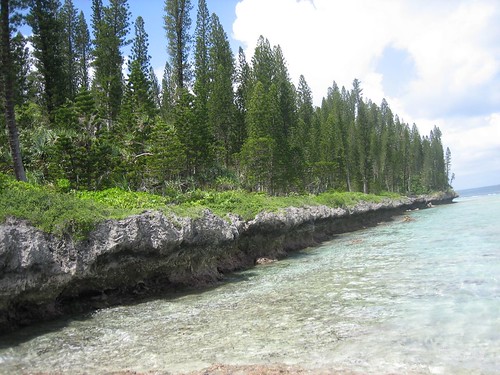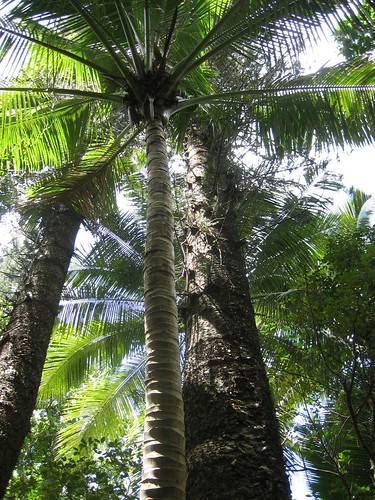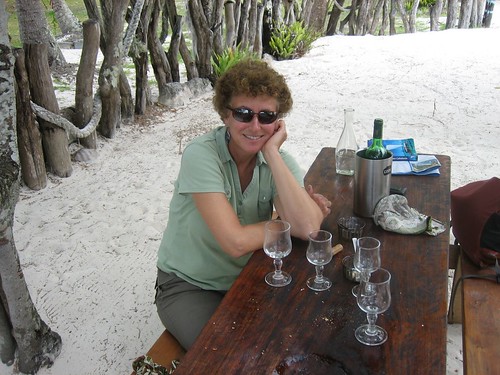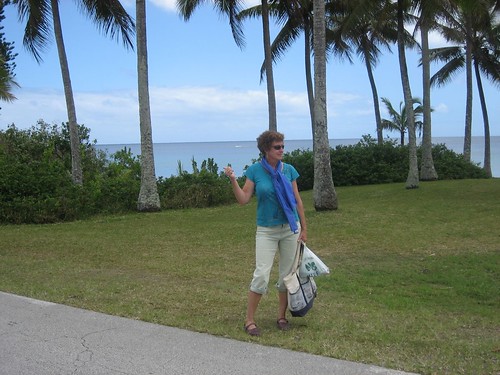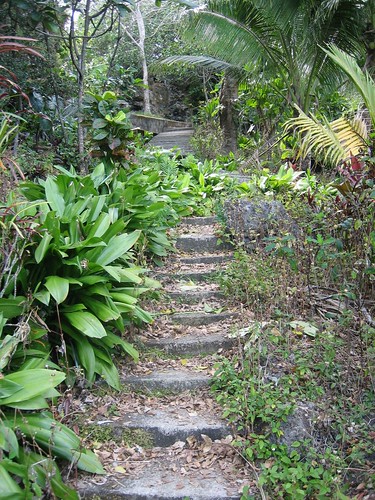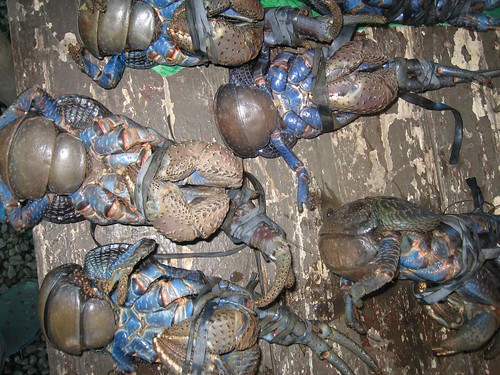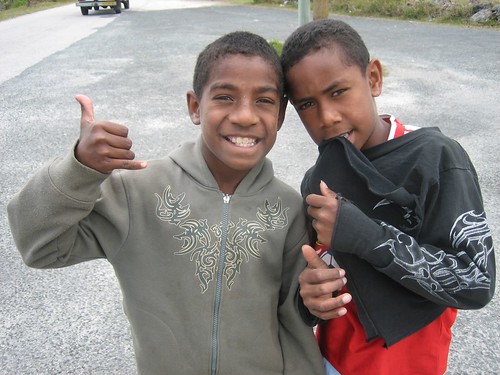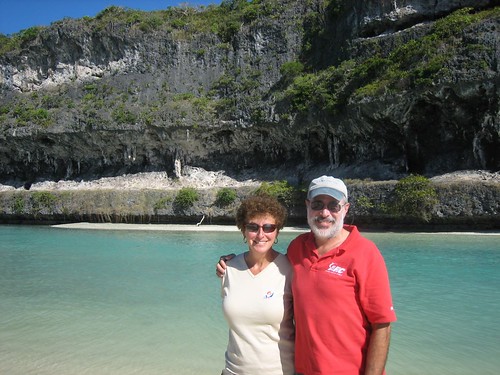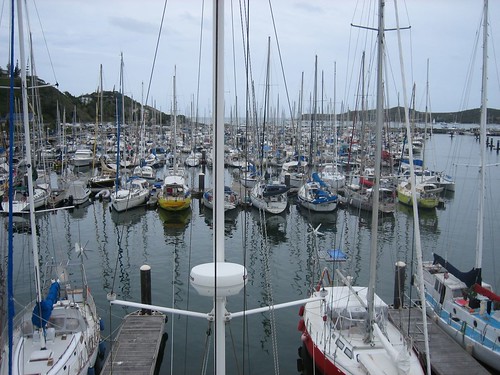
October 28, 2008
We remain at the Port Moselle Marina in Noumea, New Caledonia. We have completed almost all of our preparations to go to sea and now just wait for a weather window for the passage to Australia. The earliest we can leave is Thursday morning since we have not yet done the check-out, which involves stops at Immigration, Customs, and then the Port Captain. A wonderful weather window opened on Saturday and resulted in the departure of many boats including most of our friends. There is a big fat area of high pressure in the Tasman Sea and no low pressure for hundreds of mile. It is not clear that this good weather window will last until Thursday, and if not, we will wait patiently in Noumea.
The reason that we could not leave with the others is that we had an important repair to make on Sabbatical III. After we arrived in Iles des Pines, I noticed that oil in the Amel transmission was suddenly mixed with sea water. Amel’s like Sabbatical III are unusual in that they do not have a prop shaft. Instead, power from the engine is transmitted through a set of gears that are contained in a tube located in the keel. This tube is filled with about 2.5 gallons of oil and rises into the engine compartment to a point above the waterline. The prop itself is attached to the keel. This is Amel’s own design and it has various benefits. The drawback of this system is the possibility that seawater may find it’s way into the oil-filled gear tube as the prop turns. To reduce that risk, Amel’s have three redundant seals on the bronze bearing for the prop. These seals and the bronze bearing need to be changed every two years or so as they can wear out. The bearing and seals on Sabbatical III were changed just before we were relaunched in New Zealand in May, and so are quite new. Nonetheless, the presence of water in the oil indicated a leak and the only logical place for the leak is where the prop turns in the bearing at the bottom of the keel.
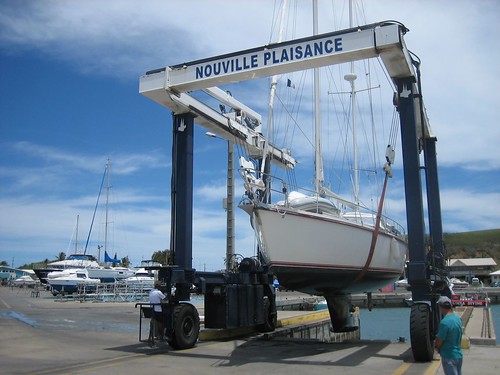
When we arrived in Noumea, I found a marine repair specialist, Monsieur Caubert Gerard, through the Cercle Nautique Caledonien, the yacht club of New Caledonia. Gerard and his associate Patrick met us at the marina on our first day in Noumea. They took us to Nouville Plaisance in their truck, the marine repair facility on the far side of the bay, to book a haul-out, and then we all went out for lunch in the port district. We were hauled yesterday morning and it took about 3 hours to replace the bearing and the seals. Fortunately, I had two spare sets of bearings and seals aboard Sabbatical III or else we would have to have them shipped to us from Amel in France. Gerard speaks only a little English so Laura translated my understanding of how the prop drive system must be disassembled. That understanding came from a detailed English-language document written by an American Amel owner and posted on the Web. In preparation, Laura researched mechanical and marine terms in French in her “French for Cruisers” book. The boat was back in water a bit more than three hours after she was hauled. Things seem fine but we will not really know until she has been running under engine power for some hours. The need to haul the relaunch the boat for this repair made it fairly expensive but we are quite fortunate to be in a place with a yacht haul-out facility (for example, there is none in places like Vanuatu, Tonga, and Samoa), and to have an experienced person like Gerard around for the job.
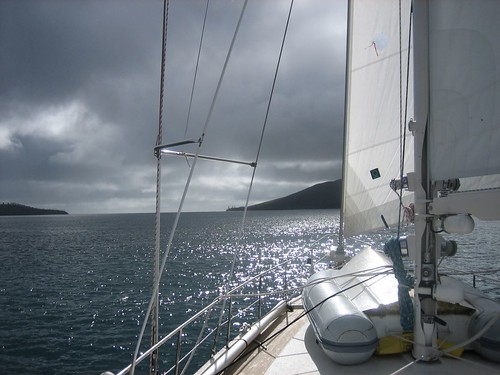
The hardest part of the day was getting back into our berth in the marina. The wind kicked up while the boat was “on the hard” and was blowing 25-28 knots when we were put back in the water. Typically, it is pretty easy to back Sabbatical III into a slip by using the bowthruster, a small electrical propellor in the bow of the boat that turns the bow to port or starboard. To steer in reverse, I can only use the bowthruster as the rudder is pretty useless then. Yesterday the wind was blowing so hard across the bow that the bowthruster was not powerful enough to fully counter the big gusts. I had to abort my first attempt to back into the slip as we were almost blown onto the boat that shares our double-wide berth. I made it on my second try thanks to a team of fellow boaters than ran out to help catch the lines that Laura threw, and then pulled the boat into place as I worked the bowthruster as hard as I could. We were both frazzled by the experience. In hindsight, we should probably not have even tried to come back into the marina under those conditions.
To our delight, Regine and Gerard of the French boat Galdus came into the marina and are berthed just 30 feet away from us. We have not seem them since Tonga last year except for a very distant wave in Lifou a few weeks ago. From that distant wave we knew they were somewhere around New Caledonia. They served us a wonderful lunch on Galdus today and we had time to catch up with each others adventures. They also enquired about Benjamin since they got to spend time with him when Ben visited us in Tonga last year. This is the second circumnavigation for Regine and Gerard, their first was 25 years ago.
Plans
When we leave for Australia, own plan is to sail to Brisbane (Queensland) and do our formal check-in at the port-of-entry at Rivergate Marina up the Brisbane River. If the wind does not cooperate, we may instead make landfall at Bundaberg, about 120 miles to the north. This is a passage of about 830 nautical miles and should take us five and one-half to six days. From November until next May, the boat will live at the Scarborough Marina in Moreton Bay, about a two hour sail north of Brisbane. She will be in the water until mid-December and then get hauled for dry storage for about four months.
M.
